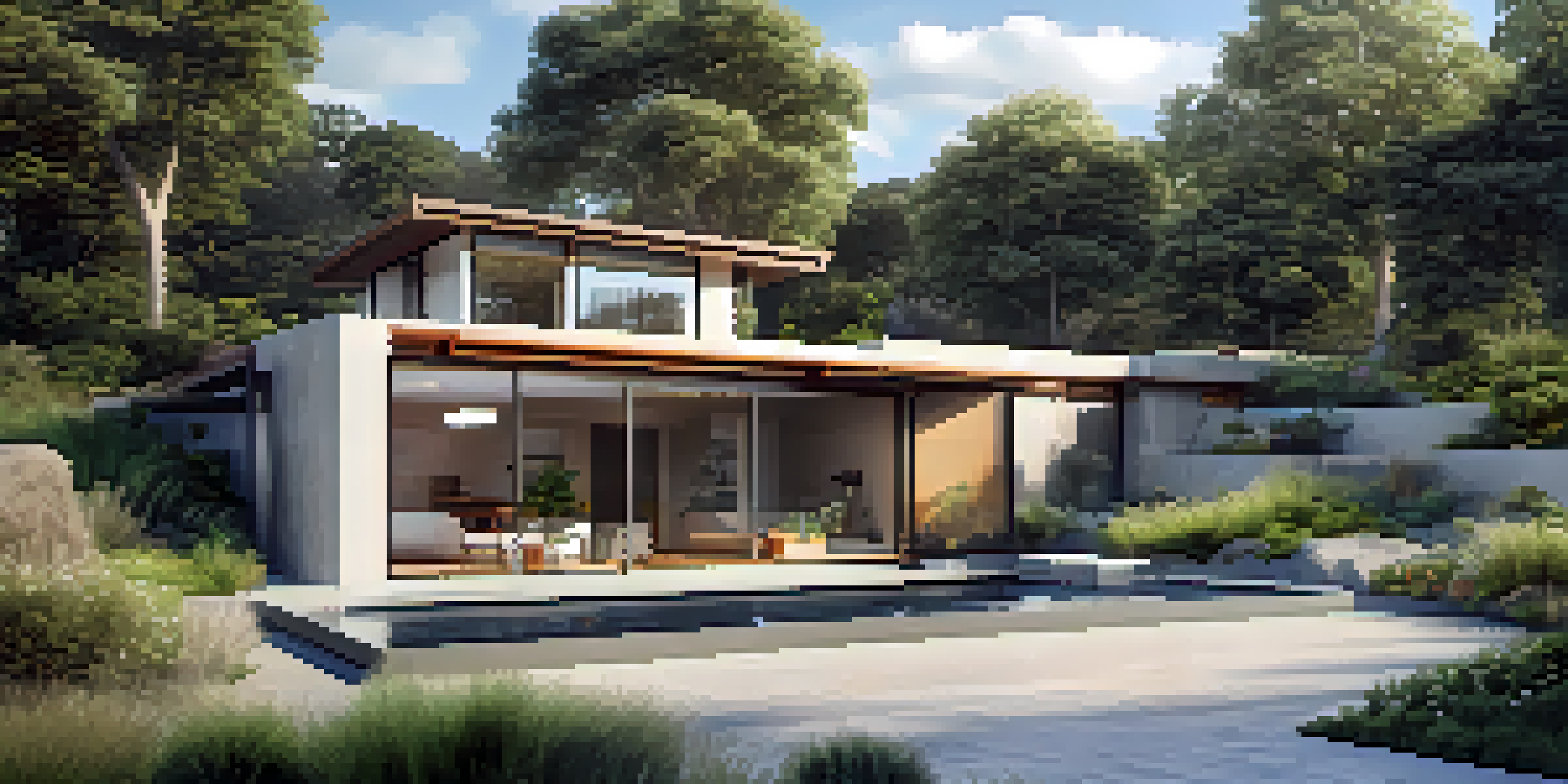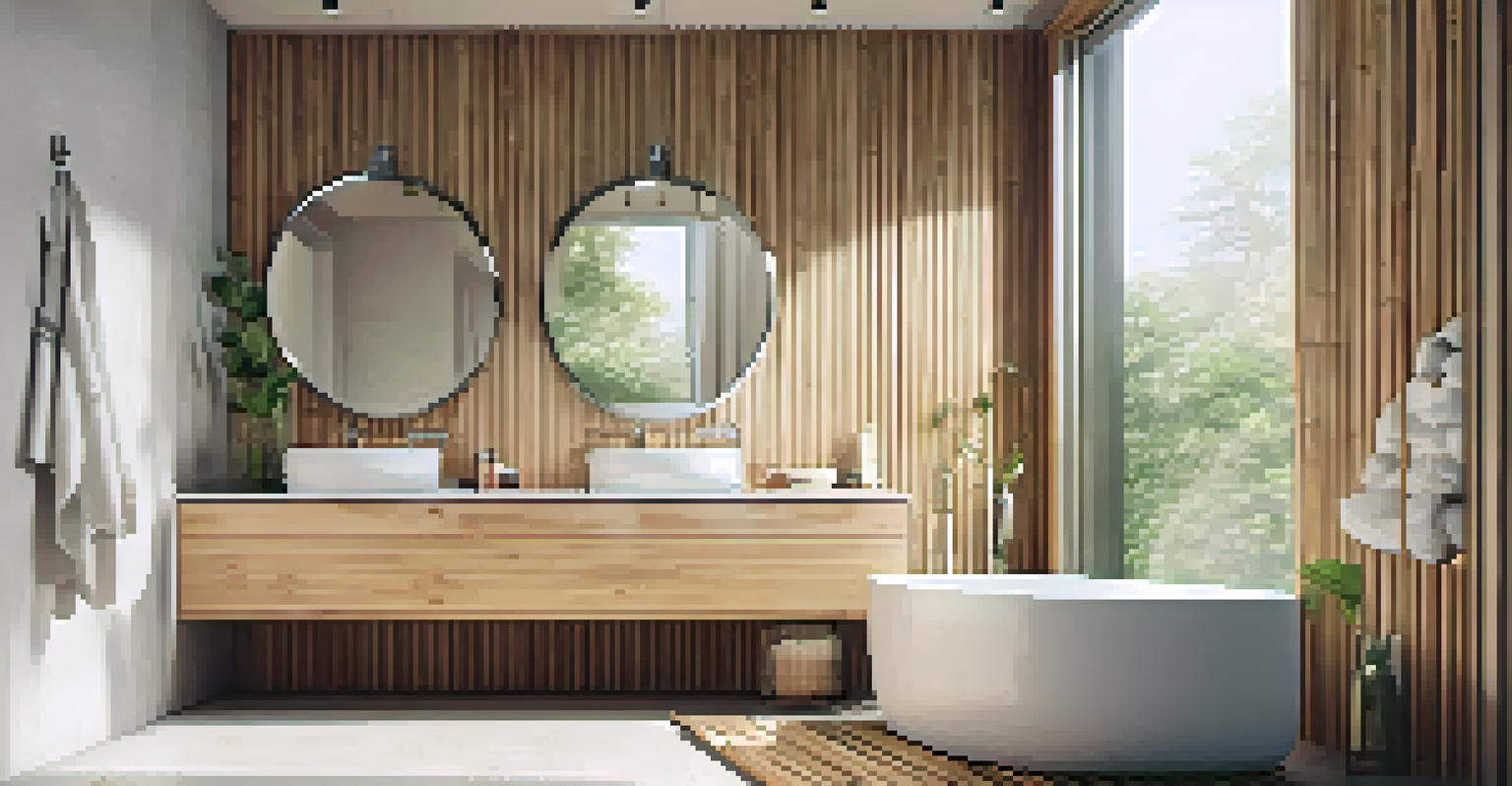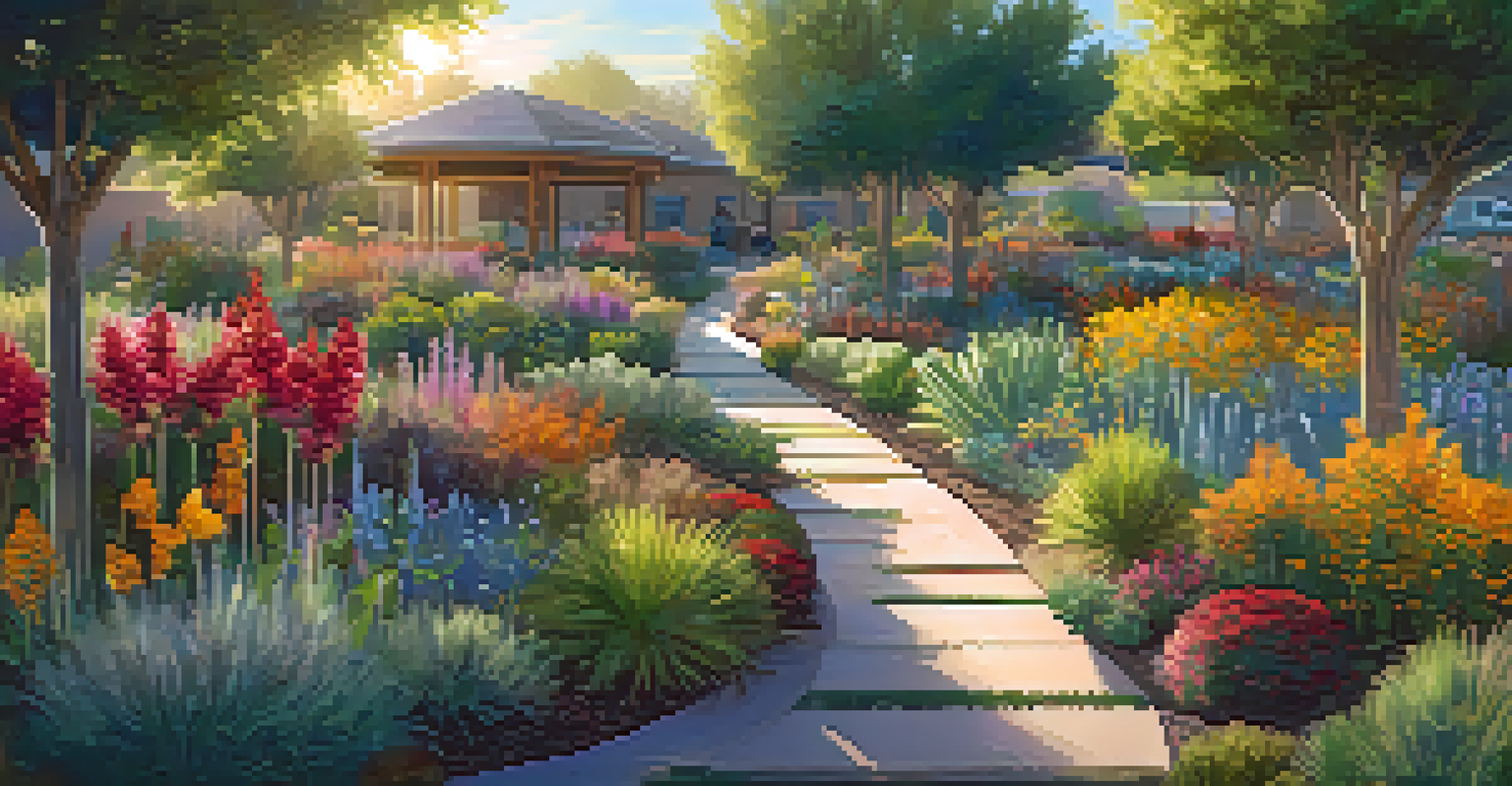Water Conservation Techniques in Green Building Projects

Understanding the Importance of Water Conservation
Water conservation is not just a trend; it's a necessity in today's world. With climate change and population growth, the demand for water is increasing while its availability is dwindling. By implementing effective water conservation techniques, we can significantly reduce waste and ensure that we have enough resources for future generations.
Water is the driving force of all nature.
In green building projects, water conservation plays a pivotal role in sustainability. It aligns with the broader goals of reducing environmental impact and promoting resource efficiency. When builders prioritize water-saving practices, they contribute to a healthier ecosystem and create more resilient communities.
Furthermore, conserving water can lead to significant cost savings over time. Building owners can benefit from lower utility bills, and the initial investment in water-efficient technologies often pays off quickly. Thus, adopting water conservation techniques becomes a win-win situation for both the environment and the economy.
Implementing Rainwater Harvesting Systems
Rainwater harvesting is a popular technique for capturing and storing rainwater for later use. By installing collection systems on roofs, buildings can redirect rainwater into storage tanks, which can then be used for irrigation, toilets, and even washing machines. This not only reduces reliance on municipal water supplies but also helps manage stormwater runoff.

Incorporating rainwater harvesting into green building projects can significantly decrease the overall water demand. For instance, a building that effectively captures rainwater can reduce its potable water usage by up to 50%. This showcases how sustainable design can directly impact water conservation efforts.
Water Conservation is Essential
Effective water conservation techniques are crucial for ensuring sustainable water availability amidst climate change and growing demand.
Moreover, rainwater harvesting systems are relatively easy to install and maintain. With the right design and planning, these systems can blend seamlessly into a building’s architecture, making them both functional and aesthetically pleasing. It's an excellent example of how sustainability and style can go hand in hand.
Utilizing Greywater Recycling Systems
Greywater recycling is another effective water conservation technique that involves reusing water from sinks, showers, and laundry. This 'used' water can be treated and repurposed for non-potable uses like irrigation or toilet flushing. By implementing greywater systems, buildings can dramatically cut down on their freshwater consumption.
The best way to predict the future is to create it.
For instance, a single-family home may generate enough greywater to supply up to 50% of its outdoor irrigation needs. This not only conserves water but also reduces the burden on local sewage systems. In urban areas, where water may be scarce, greywater recycling can be a game-changer.
However, it's essential to ensure that greywater systems are designed and maintained correctly to prevent health hazards. Building codes and regulations often govern these systems to ensure safety and efficiency. With proper implementation, greywater recycling can be a straightforward and beneficial addition to any green building project.
Incorporating Low-Flow Fixtures and Appliances
One of the simplest ways to conserve water in buildings is through the use of low-flow fixtures and appliances. These include faucets, showerheads, and toilets designed to use significantly less water without compromising performance. For example, low-flow showerheads can save a family thousands of gallons of water each year.
Low-flow appliances, such as dishwashers and washing machines, also contribute to water conservation. Many modern models are specifically designed to be water-efficient, helping households decrease their water usage while still getting the job done effectively. This means that sustainability can be both practical and convenient.
Smart Systems Enhance Efficiency
Innovative technologies like rainwater harvesting and smart irrigation systems significantly reduce water usage and promote sustainability.
Moreover, these fixtures and appliances often come with added benefits, such as lower energy consumption and reduced utility bills. By investing in low-flow technologies, homeowners and builders can take a significant step toward creating a more sustainable living environment without sacrificing comfort.
Designing Landscapes for Water Efficiency
Landscaping can have a profound impact on a building's overall water usage. By designing landscapes that require less water, builders can create beautiful outdoor spaces that are also environmentally friendly. Techniques such as xeriscaping, which uses drought-resistant plants, can minimize the need for irrigation.
Additionally, incorporating features like rain gardens and permeable pavements can help manage stormwater while promoting water conservation. These designs not only reduce runoff but also enhance the aesthetic appeal of the landscape. It's a perfect example of how functionality and beauty can go hand in hand.
Furthermore, thoughtful landscape design can lead to improved biodiversity and habitat creation. By choosing native plants and creating diverse ecosystems, builders can contribute positively to the local environment. This holistic approach to landscape design emphasizes the interconnectedness of water conservation and ecological health.
Implementing Smart Irrigation Systems
Smart irrigation systems represent the future of water-efficient landscaping. These systems utilize technology to optimize watering schedules based on weather conditions and soil moisture levels, ensuring that plants receive just the right amount of water they need. This prevents overwatering and promotes healthy plant growth.
For instance, a smart irrigation system can adjust watering times based on recent rainfall, saving significant amounts of water. By integrating sensors and automated controls, these systems not only conserve water but also reduce the time and effort required for landscape maintenance.
Education Fosters Sustainable Habits
Educating building occupants on water conservation practices maximizes the benefits of implemented technologies and encourages responsible water use.
Moreover, smart irrigation systems can often be controlled remotely via smartphone apps, giving homeowners flexibility and convenience. This technology-driven approach to irrigation exemplifies how innovation can enhance sustainability efforts in green building projects.
Educating Occupants on Water Conservation Practices
While implementing water-saving technologies is crucial, educating occupants about water conservation practices is equally important. Awareness campaigns and workshops can empower residents to adopt habits that further reduce water waste, such as shorter showers and mindful appliance use.
Building managers can also provide resources and tips on how to maintain and utilize water-efficient systems. By fostering a culture of conservation within a building, the benefits of water-saving measures are maximized. It's about creating a community that values sustainability.

Additionally, occupants who understand the importance of water conservation are more likely to engage in sustainable practices outside of their homes. This ripple effect can lead to broader environmental benefits, reinforcing the idea that every small action contributes to a larger goal of sustainability.